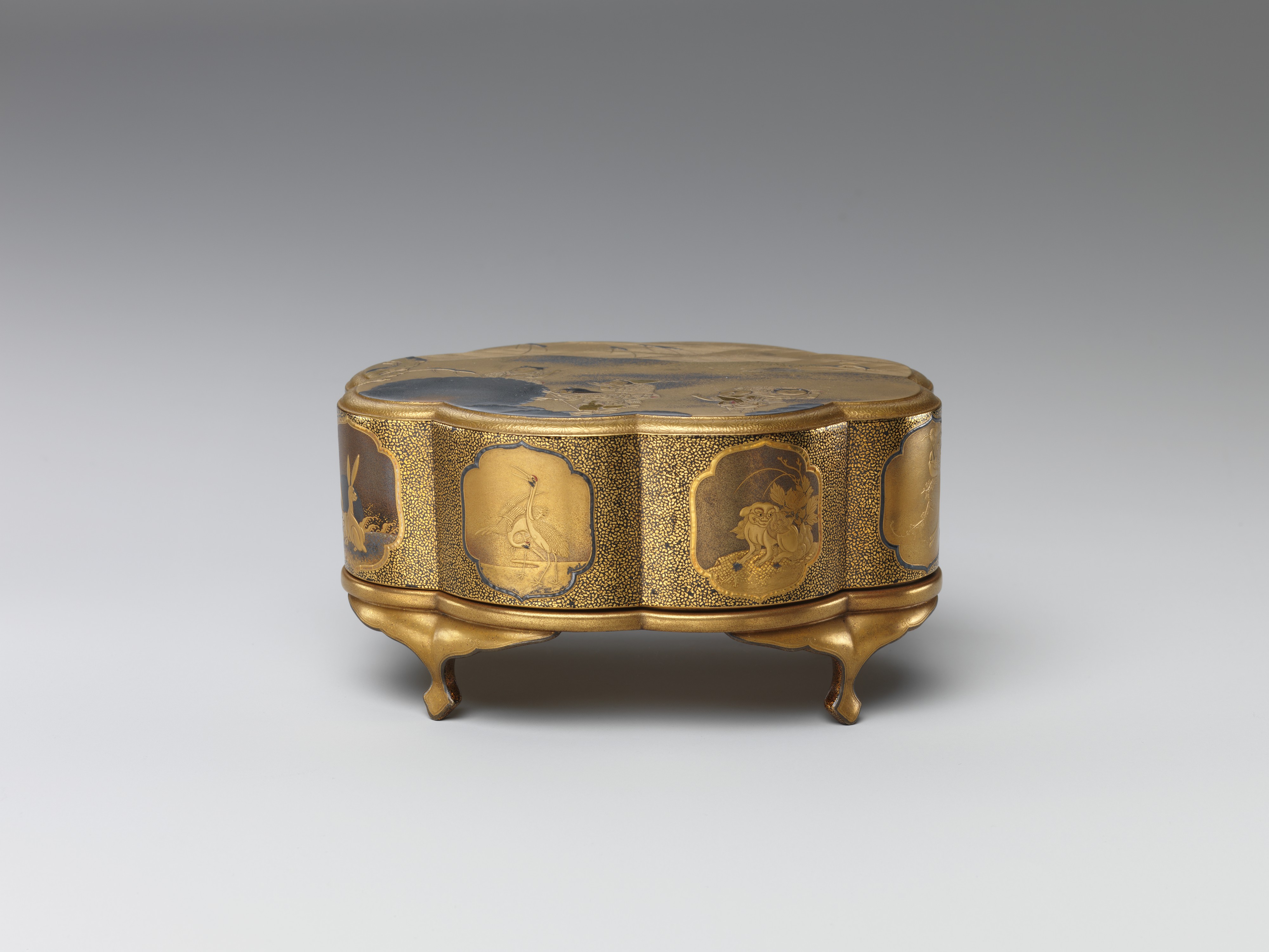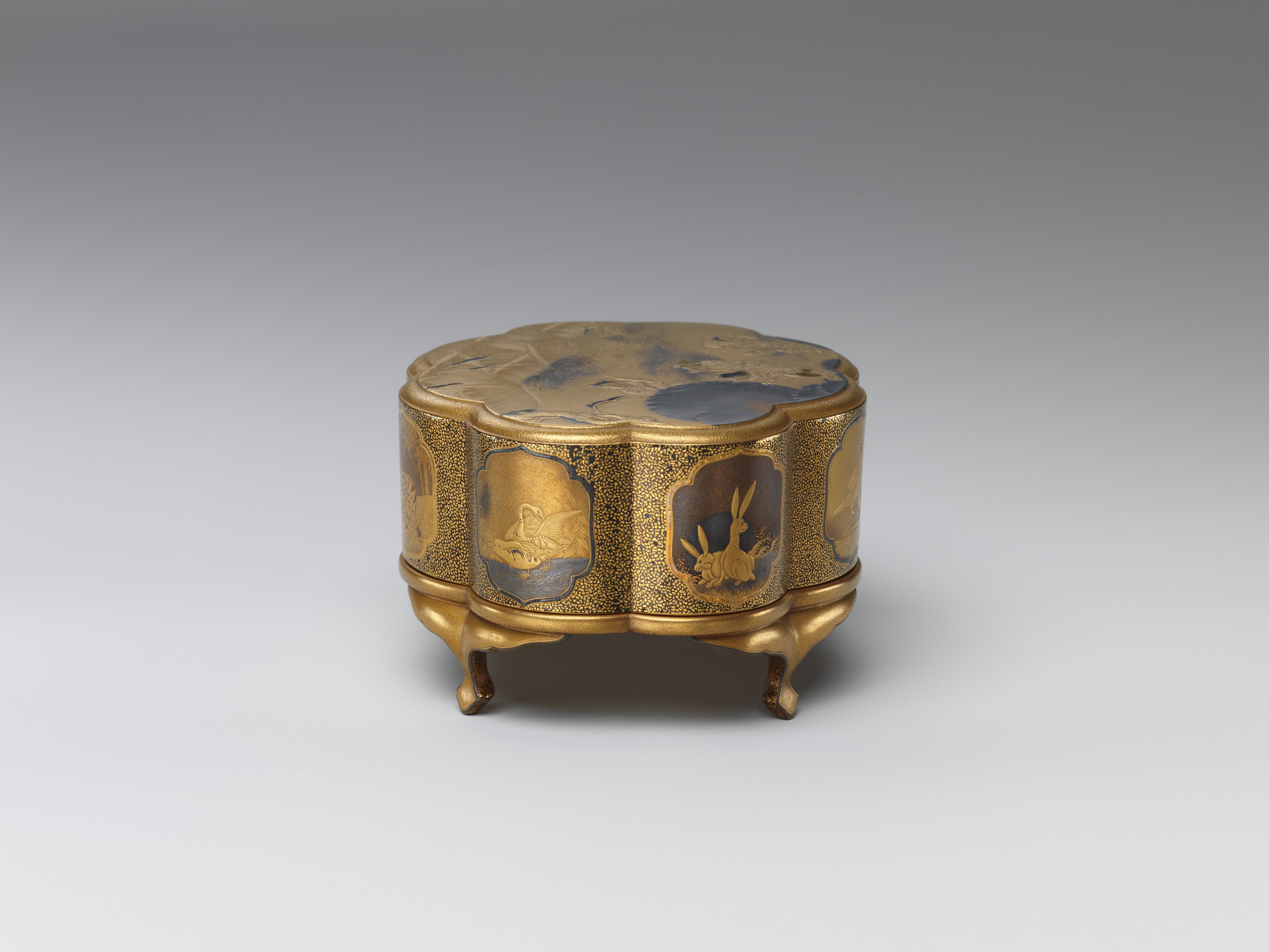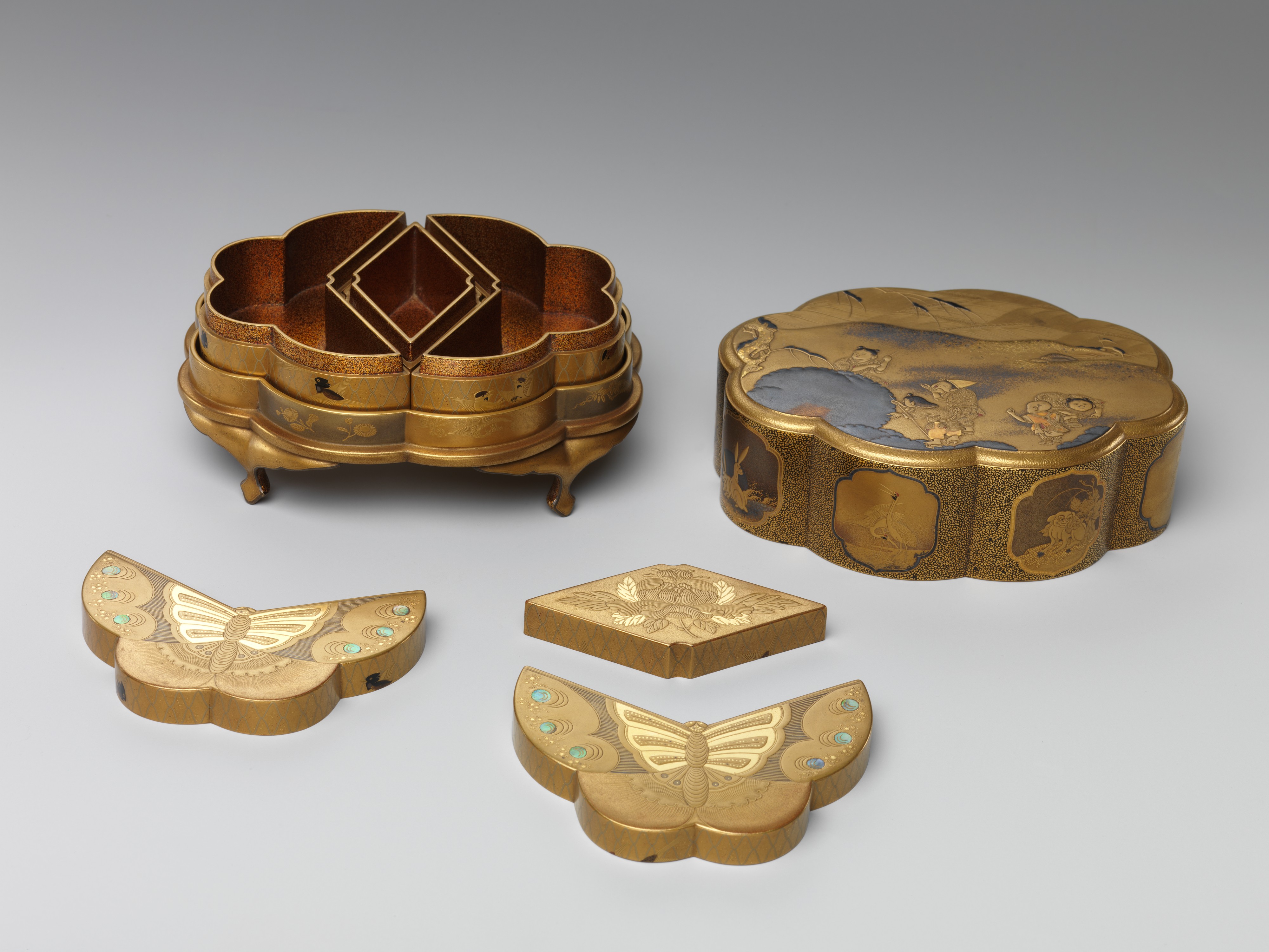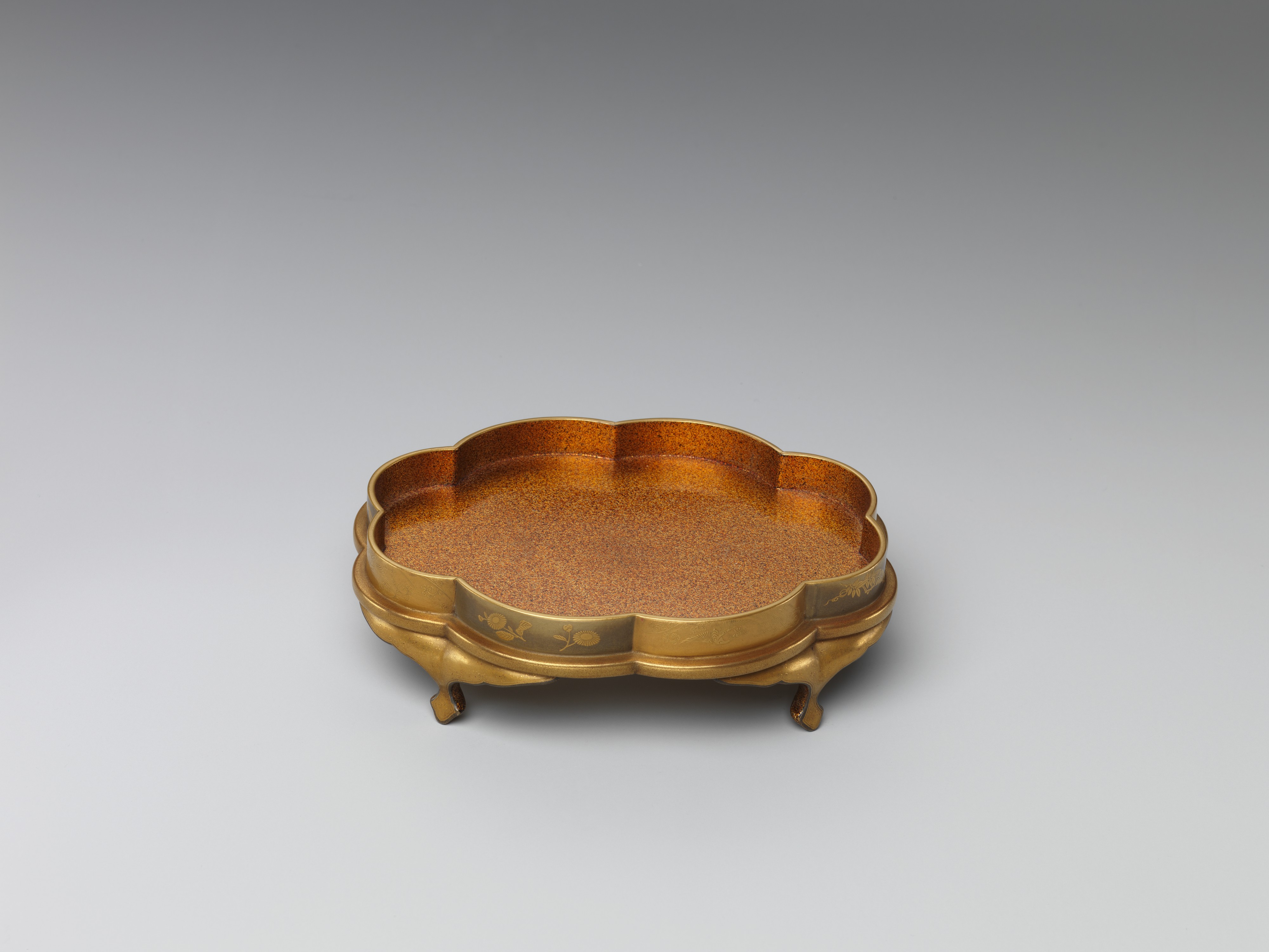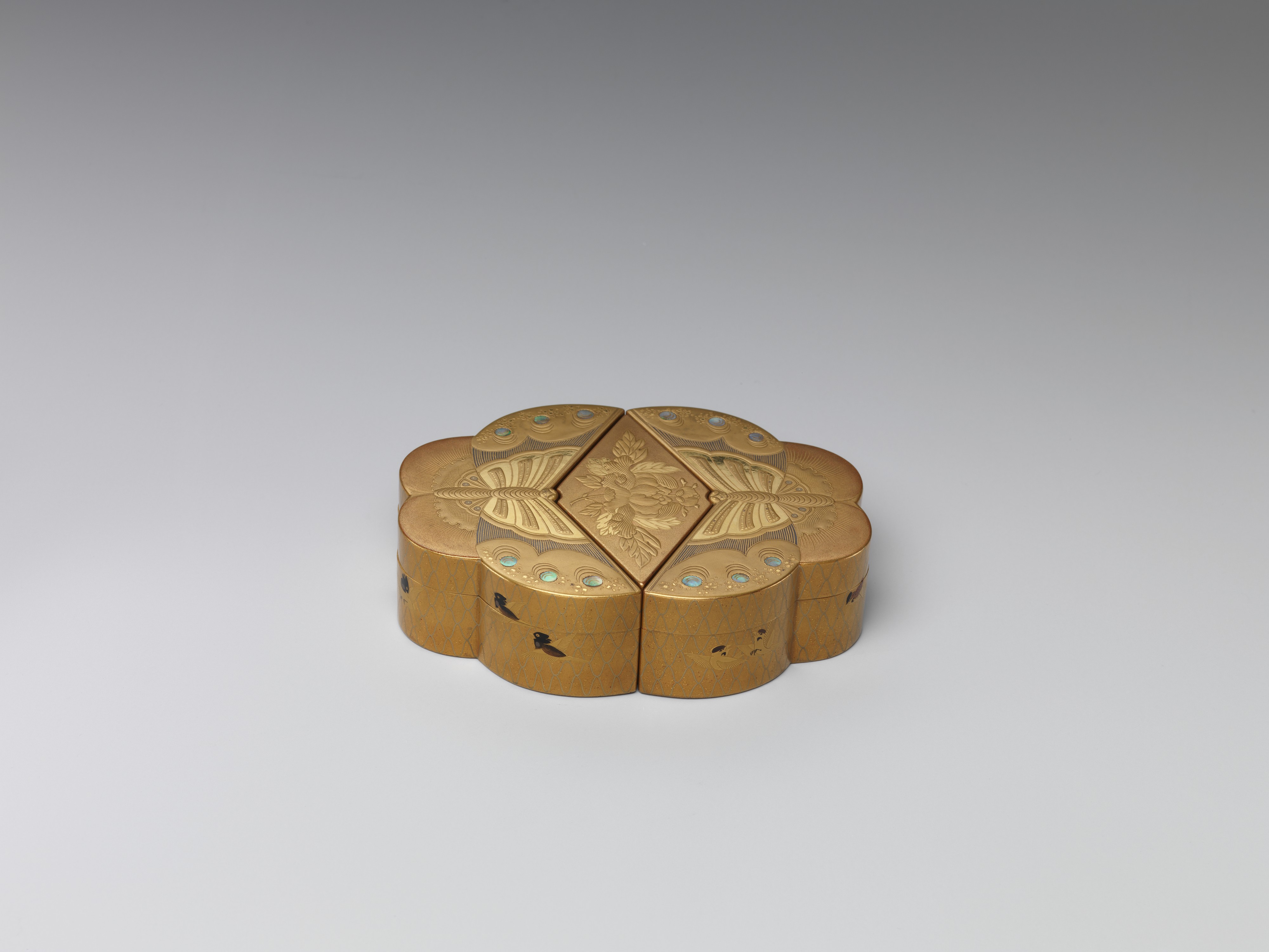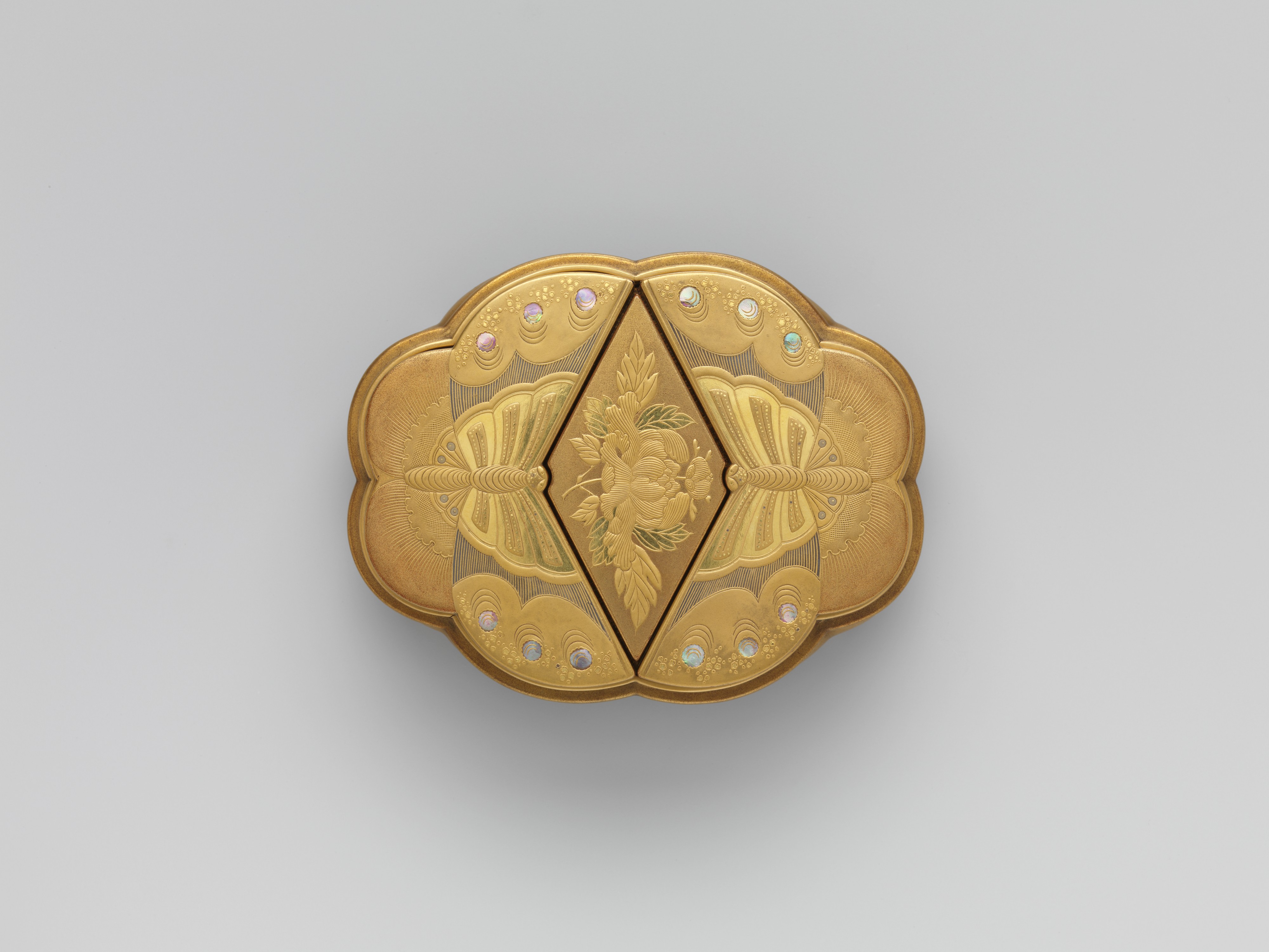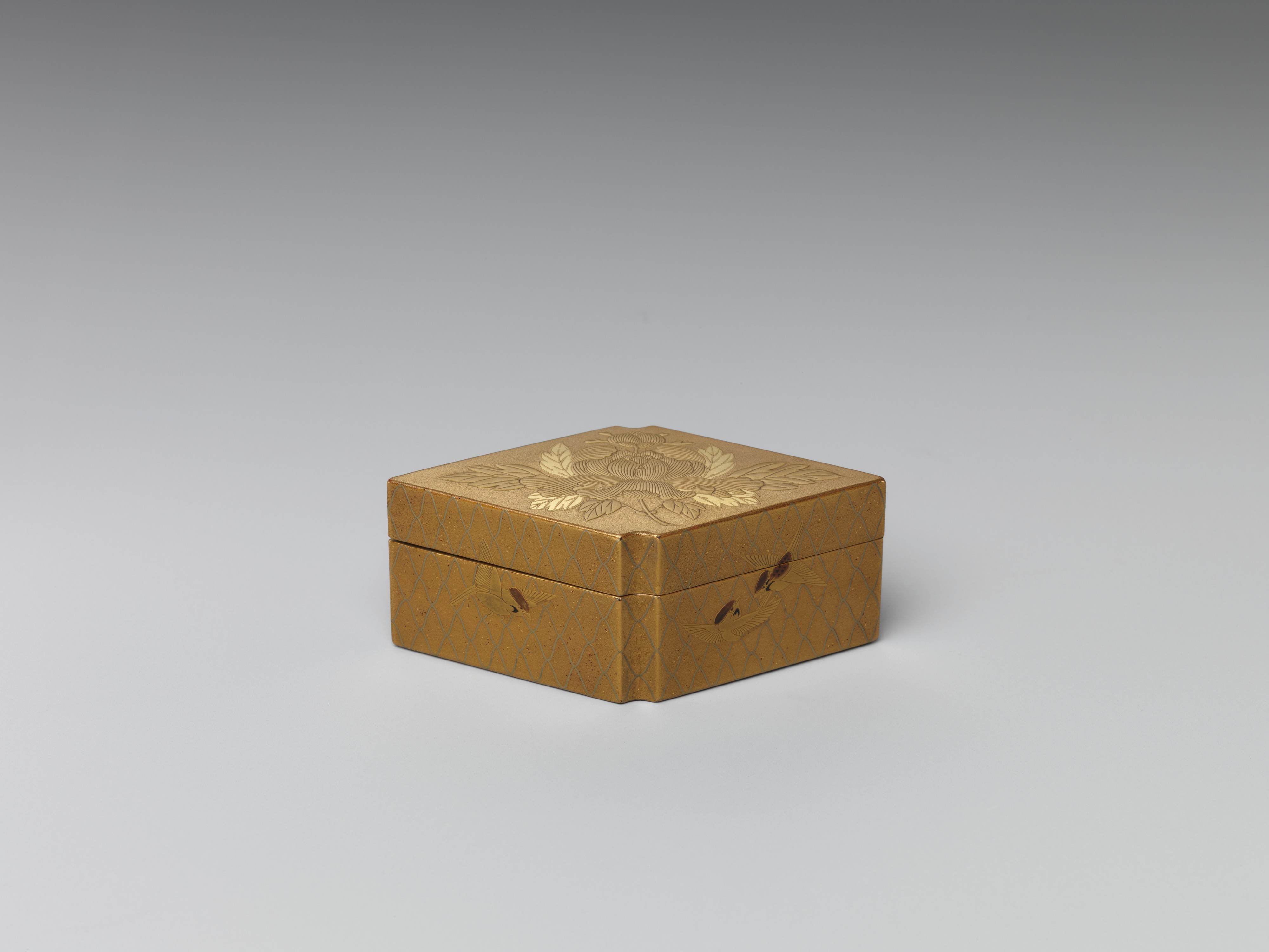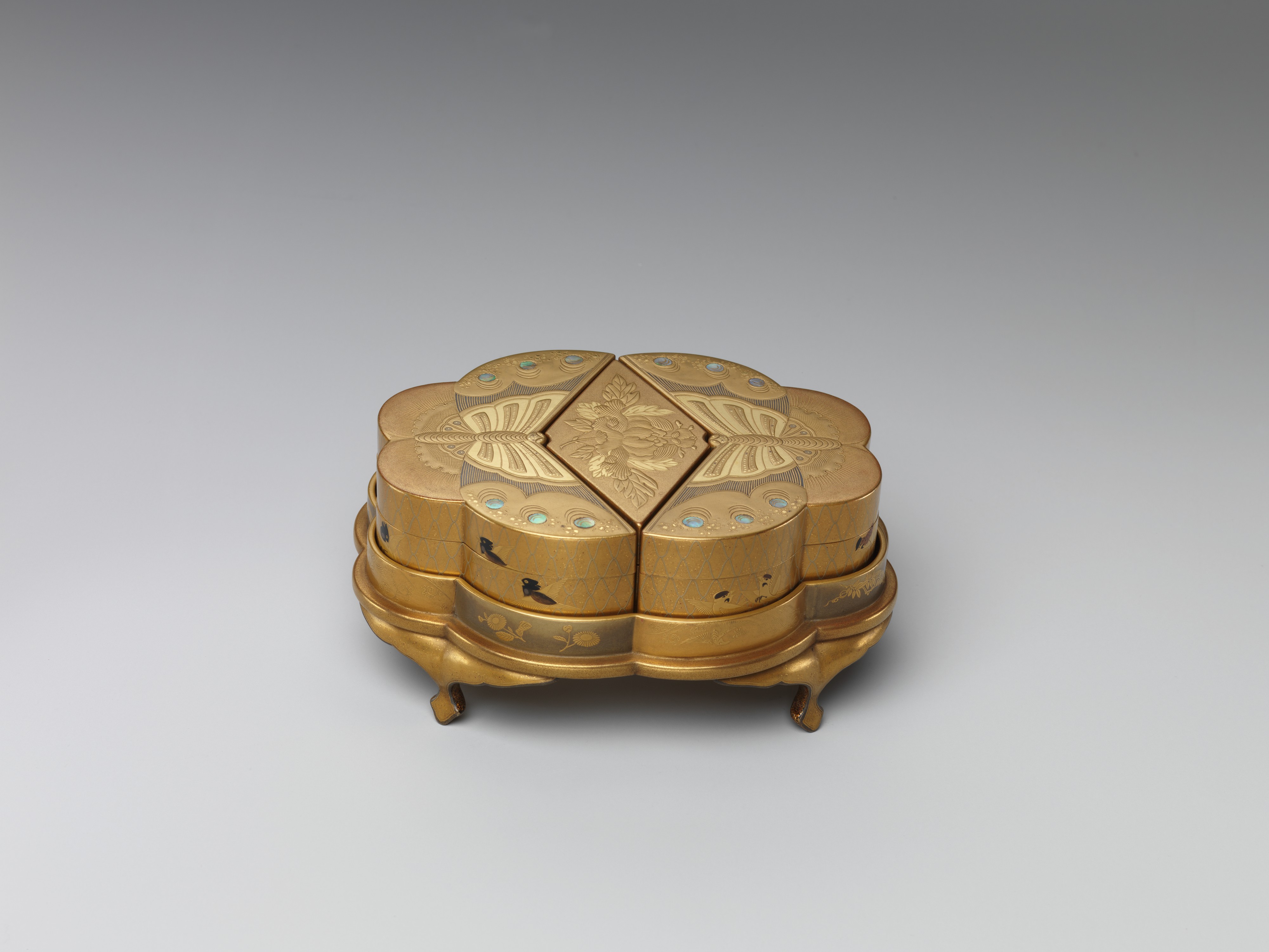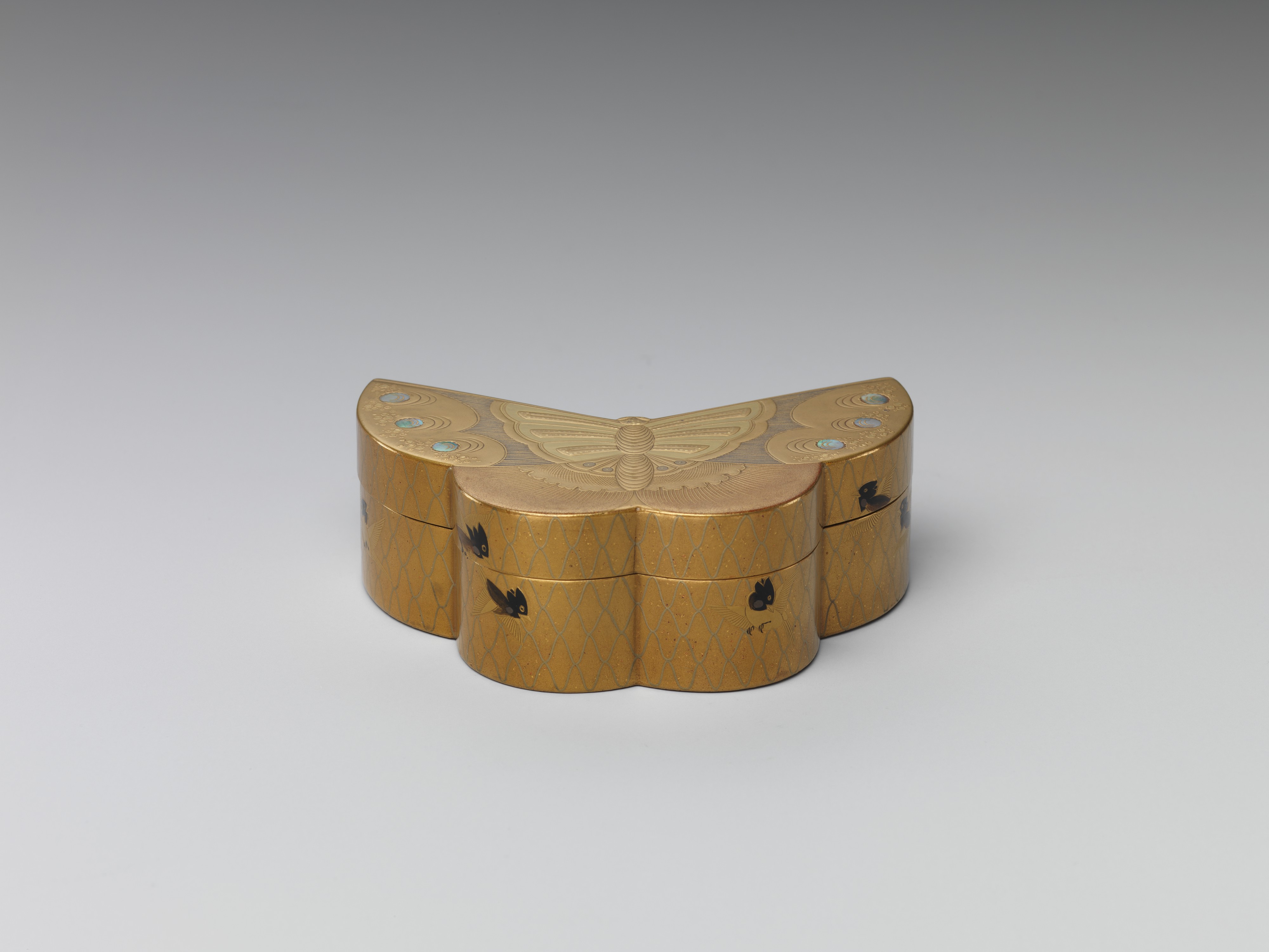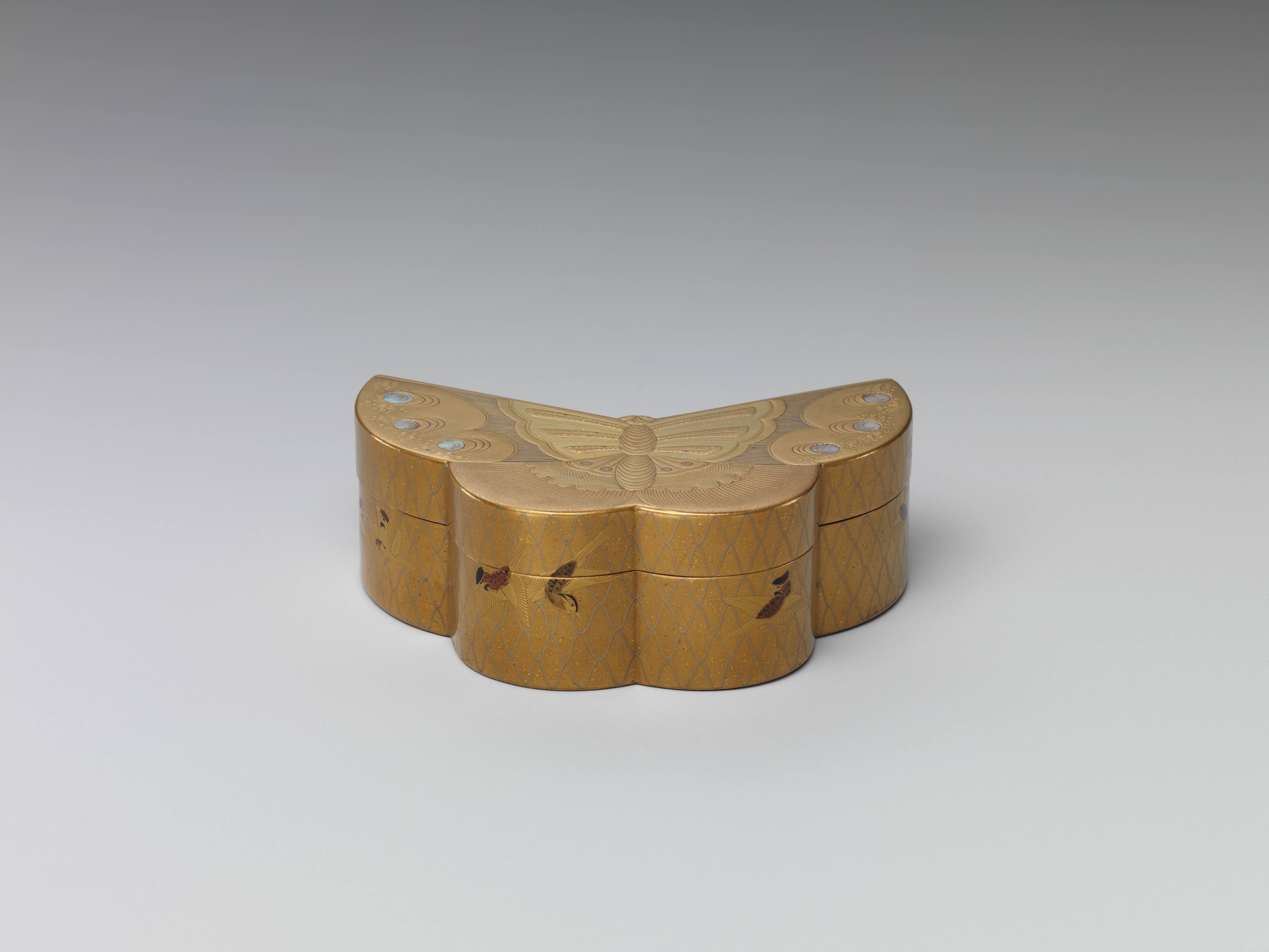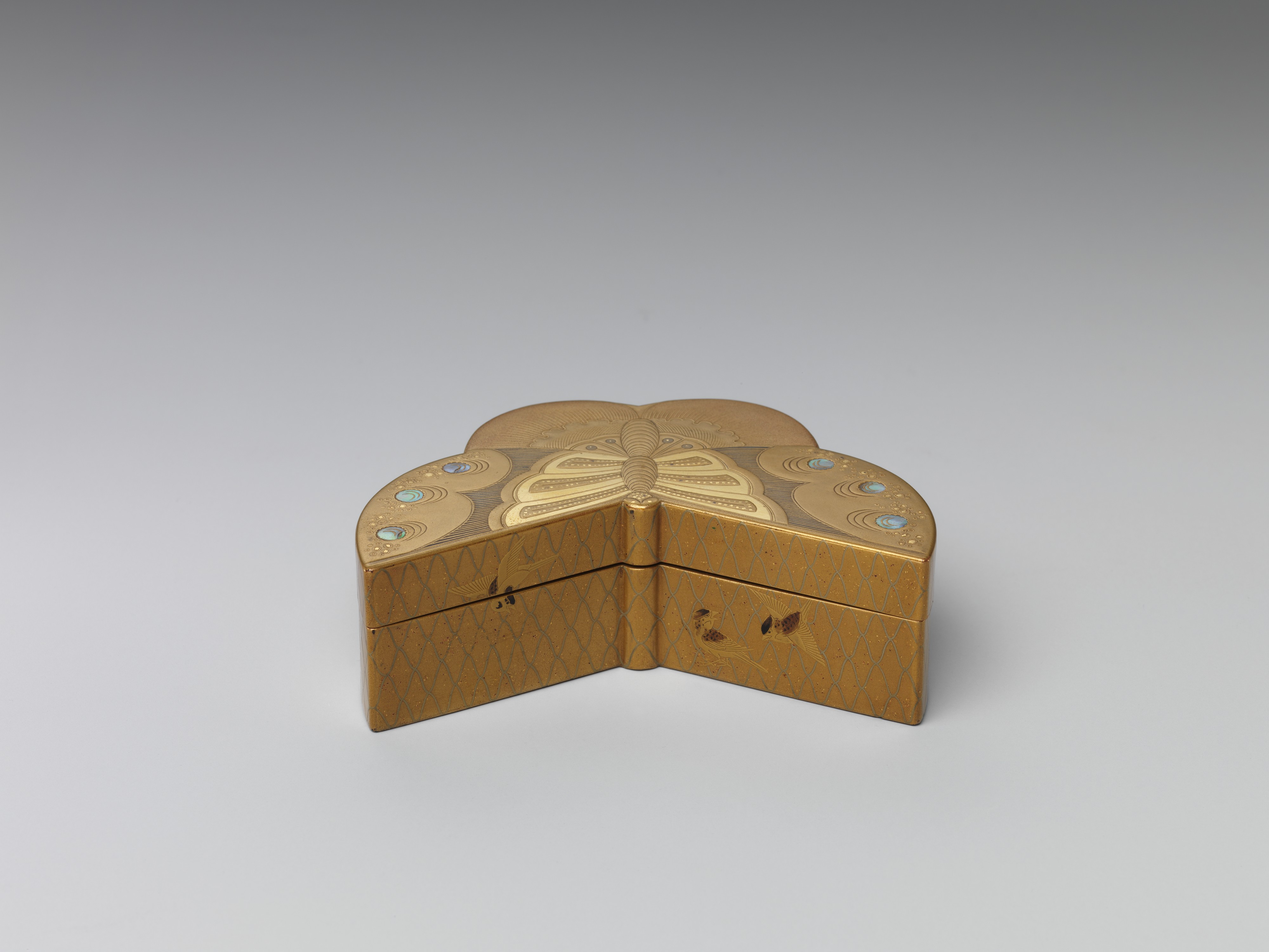Incense box with Chinese children playing with snowballs
Not on view
This eight-lobed incense box has small curvy legs. The decoration on the lid shows Chinese children playing with large snowballs or snowflakes; in the background are a snow-covered tree and waves of a lake. On the side of the box, various symbolic or auspicious animals are depicted in cartouches, such as the hare, tiger, crane, and lion. Inside the box are three small incense containers. Two of these are in the shape of butterflies, while the other is a rhomboid box placed between them, and decorated with a peony pattern. The incense box is decorated with several maki-e (decoration with gold and/or silver sprinkled powder) techniques, among them the meticulous okibirame (individual gold flakes placed onto the sticky lacquer surface) and mother-of-pearl inlay. The box is very finely executed, with attention paid to every detail of composition and technique. The style, shape, and motifs recall eighteenth-century incense boxes, some of which were owned by European aristocrats as exotic curiosities, but this box was made in the Meiji period (1868–1912) during a revival of eighteenth-century taste.
This image cannot be enlarged, viewed at full screen, or downloaded.
This artwork is meant to be viewed from right to left. Scroll left to view more.


